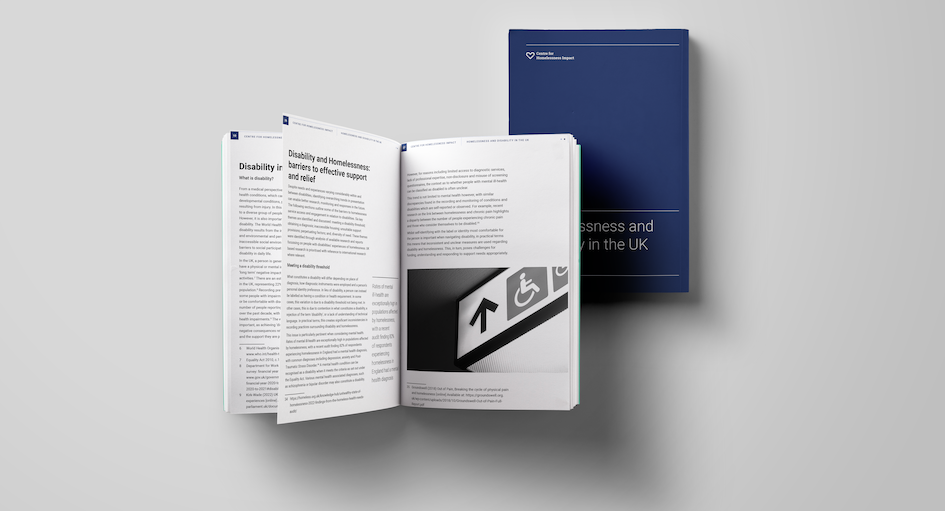Report shines light on barriers faced by people with disabilities in exiting homelessness

The barriers that people with disabilities face getting support and exiting homelessness, including difficulty getting a diagnosis, unsuitable environments, and a shortage of accessible housing, have been highlighted in a new report by the Centre for Homelessness Impact.
The research comes alongside findings that working-age adults with disabilities are more than twice as likely than their peers to live in poverty in 2022.
The new report, ‘Homelessness and Disability in the UK’, by Dr Beth Stone, a lecturer in disability studies at the University of Bristol and Emily Wertans, a researcher at the University of Leicester, highlights the higher prevalence of physical disabilities and health conditions in households experiencing poverty and potential homelessness.
Drawing on government data and research reports, headline statistics highlight that only 0.7% of local authority housing in Scotland is wheelchair accessible.
The report also found:
- Between 2018 to 2022 in England, households accepted as homeless by reason of physical ill health or disability increased by 73%
- 82% of people experiencing homelessness in England have received a mental health diagnosis
- There is a shortage of accessible housing across the UK - in England only 7% of homes incorporate minimal accessibility features
- The poverty rate for people with disabilities is 32%, 12% higher than poverty rates in the general population. Disability employment rates of 53% remain significantly lower than the employment rate of the general population (83%). These social and economic barriers are also causes of homelessness, suggesting that people with disabilities may be at increased risk of experiencing homelessness
- People with disabilities are over-represented in homeless populations, but the issue may be underestimated due to a lack of understanding and inconsistent data recording
The report calls for improvements to the consistency of provisions by tackling the postcode lottery of effective support and improving housing in conjunction with support, highlighting that the housing first support model has seen success.
The Centre’s ‘End it With Evidence’ campaign calls on policy makers to build a stronger evidence base for what works in tackling poverty and homelessness, put these insights at the fingertips of people who work in the sector, and create a culture change within the entire system to ensure that evidence-based practice is embedded.
Dr Beth Stone, the lead author, said: “Many people with disabilities in the UK are subjected to unacceptable standards of living and face significant barriers to inclusion in society. The risk of people with disabilities experiencing homelessness has become especially critical in recent years.
“Government and research data illustrates a troubling pattern of the overrepresentation of physical and neurodevelopmental conditions in homeless populations. Understanding the scale and depth of the intersection between disability and homelessness is vital to improving future outcomes.”
Emily Wertans, co-author, said: “For people experiencing both disability and homelessness, the challenges for navigating either situation are amplified. Without addressing the full diversity and needs within a person’s circumstance, the risk of both disability and homelessness worsening is significantly increased. Effective support both in terms of homelessness prevention and response must centre around an accessible, person-centred, evidence-based approach from spaces that have received specialist training and resource.”
Ligia Teixeira, chief executive of the Centre for Homelessness Impact, added: “Our report highlights consistent higher levels of physical disabilities and health conditions within households impacted by homelessness. Distressingly, it finds that barriers faced by people with a disability make it harder to get support and to exit homelessness.
“These obstacles include difficulties in getting a diagnosis from a GP, in order to get support; unsuitable environments such as noisy homeless hostels that can overwhelm people with some neurodevelopmental conditions; and acute shortages of accessible housing with lifts, ramps, mobility aids and lowered surfaces that are essential to daily living for people with certain disabilities.
“This seems wrong on multiple levels. It means their chances of exiting homelessness on their own initiative are severely limited. They depend on the system working well in every instance.”









